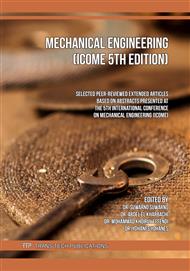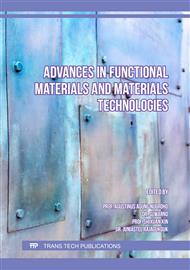p.73
p.83
p.89
p.95
p.101
p.107
p.115
p.121
p.131
Application of Psidium Guajava Leaf Extract as an Organic Inhibitor in Acid Solution and Temperature Variation
Abstract:
Corrosion is a change in the properties of a material, mainly metal, due to a reaction with the surrounding environment. One of The ways to inhibit corrosion is by adding inhibitors. Organic inhibitors are inhibitors that are considered environmentally friendly. In this study, the guava leaf extract of Psidium guajava was used as an organic inhibitor. Materials used are API 5L Grade B steel in 1M HCl solution as corrosive media with the concentration of the extract used in this study 1188ppm with a temperature variation of 30, 35, 40, 45, and 50 Celcius degrees. The types of tests carried out in this study were Electrochemical Impedance Spectroscopy and Potentiodynamic Polarization. The results of the potentiodynamic polarization test of organic inhibitors obtained an efficiency of 96.7550% with a corrosion rate of 1,04460 mm/year at a temperature of 30 degrees Celsius. In the electrochemical impedance spectroscopy test, the efficiency was 96,8546%, at a temperature of 30 degrees Celsius. The results of this study showed that the inhibitor of organic Psidium Guajava extract was The higher the temperature given to the inhibitor, it does not significantly affect the efficiency of the inhibitor, which acts the corrosion rate.
Info:
Periodical:
Pages:
101-106
Citation:
Online since:
January 2023
Keywords:
Price:
Сopyright:
© 2023 Trans Tech Publications Ltd. All Rights Reserved
Share:
Citation:



